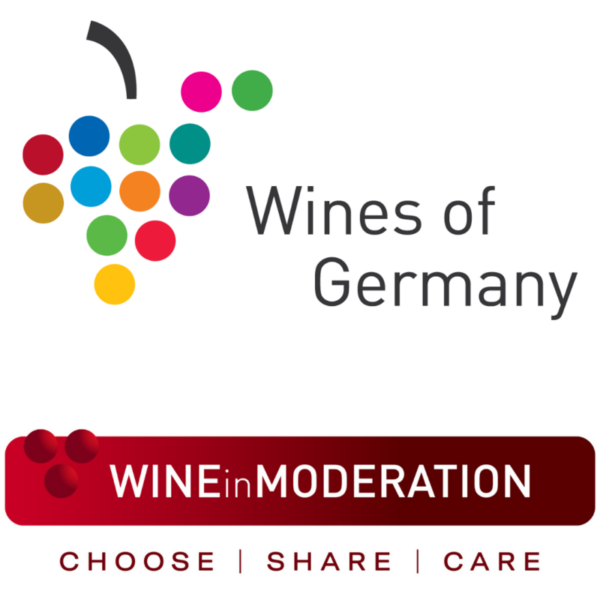Every other month, ‘Whose Wine is it Anyway?’ profiles a German winemaker to give you a behind-the-vines look at the world of German wine. This month, we’re highlighting Karsten Peter! Located in the Nahe, Karsten Peter joined Gut Hermannsberg in 2009 as Winemaker and General Manager, supporting the estate’s focus on unique German white wines from Riesling and Pinot Blanc.
Whose *Wine* is it Anyway? Meet Karsten Peter
Meet Karsten Peter
Background
Karsten was born in Bad Dürkheim in the Pfalz, with a family history in winemaking that dates back 300 years. With winemaking in his blood, Karsten studied in Neustadt and Bad Kreuznach and applied his education at wineries in Burgundy, Australia, and New Zealand. In 2009, he joined Gut Hermannsberg along with the new owners, the Reidel family, as the Winemaker and General Manager. Since joining the estate, Karsten has introduced a vineyard classification system and updated the wine cellar philosophy to one that focuses on natural fermentation with low intervention winemaking. He fully embraces the challenges that winemaking presents, appreciating the requirement of technical and intellectual skills.
Gut Hermannsberg was founded in 1902 as the Royal Prussian Wine Domaine, and the first harvest took place in 1907. Upon its founding, the estate served as an example to winemakers of the region of world-class white wines, and it has continued that tradition throughout its history. Today, the estate and wine cellar footprint remains the same as when it was founded, with the exception of the modern entrance to the cellar. The winery now produces 150,000 bottles of wine annually while maintaining the tradition and essence of the original estate.
The more I looked into the vineyards and the wines created from them, the deeper I was drawn into the subject - with the desire to understand this very unique world. Today, I know that viticulture is not an exact science, and I just listen to what the vineyard tells us and wants from us
— Karsten Peter
Vineyards
Gut Hermannsberg is made up of 29 acres with Riesling taking up 95% of the plantings and Pinot Blanc comprising the remaining 5%. The estate sources from seven Grosses Gewächs (GG, equivalent of and Grand Cru) vineyards located in the villages of Schlossbockelheim, Niederhausen, Altenbamberg and Traisen.
The estate is predominantly concentrated on producing Riesling that reflects the unique attributes of the Nahe region. As one of Germany’s coolest winegrowing regions, the stony and volcanic soils provide a pronounced minerality and raciness to the Rieslings.
Gut Hermannsberg also maintains a heavy focus on protecting the microorganisms found within the soil, as they are the transportation vehicle for the minerals to the grapes. This is done through protecting the soil from herbicides by utilizing compost, as well as working gently with the soils to build up humus complexes, a clay made up of organic fragments that make soil and the microorganisms found within soil less susceptible to erosion.
The vineyard is the star, we are just supporting them to show their own character.
— Karsten Peter
Wines
Known for their dry Rieslings, Gut Hermannsberg’s winemaking philosophy was instilled by Karsten when he joined the estate. There is a heavy focus on low intervention throughout the winemaking process. No enzymes, finings or fermenting temperature control are used in order to maintain the vineyard character in the wine. While the GG wines from the estate may take years to fully mature, they can be enjoyed from the second they are bottled. Without any aging, these wines feature a structure of crisp minerality from the slate base and notes of peach.
To fully understand the estate’s dedication to Riesling, Gut Hermannsberg suggests you try them firsthand. For those new to the wines, Karsten recommends beginning with the 7 Terroirs Riesling. This Riesling comes from seven Grossen Lagen which are vinified separately and then blended together to create one seamless wine. This wine features aromas of citrus and stone fruit with smoky mineral notes and a refreshing finish.
Reminiscent of its History
Because of the forward thinking of the estate’s original engineers, Gut Hermannsberg is entirely the same construction as it was when it was built in 1902, with the exception of the entry to the wine cellar. The cellar entry is between two of the estate’s original buildings and covered with copper, calling on the history of the Kupfergrube vineyard, which was originally an abandoned copper mine. This cellar is where each of the wines mature from anywhere between six months and six years, until they’ve reached optimal potential.
